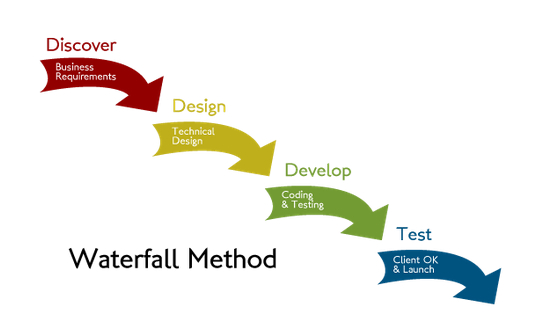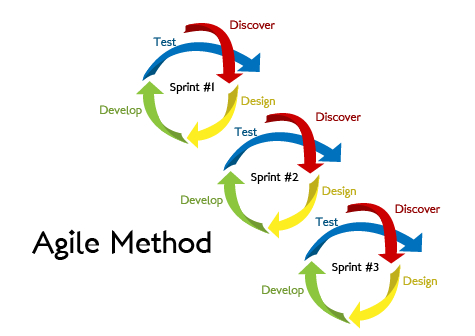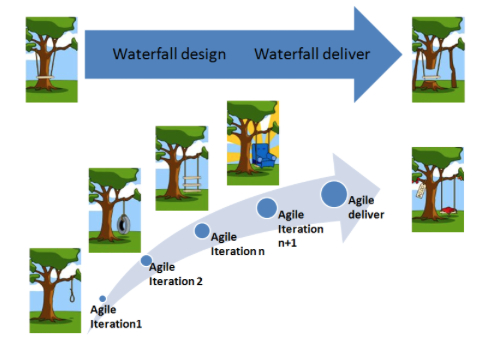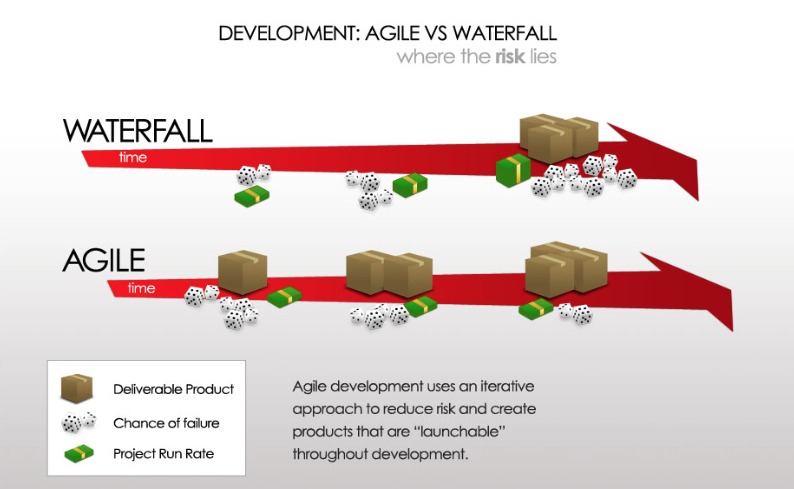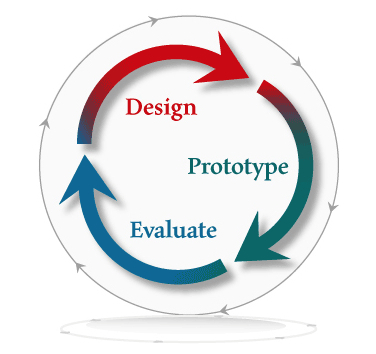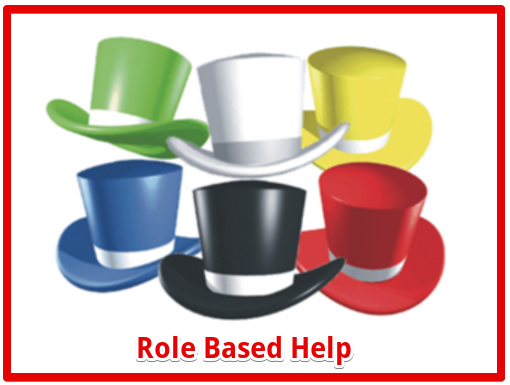We configure our software using Agile methodology
There are two ways that software can be configured - Waterfall or Agile.
After a complete design is signed off by the customer the software company goes away and does the configuration. Once it is completed it is provided to the customer to use.
Detailed design is time consuming and once the customer uses the product they normally find many things they want to change. Normally many things are configured that not used at all.
Small parts of the software are configured and the customer reviews them and suggests changes and additions.
Design time is minimal so the overall project takes less time, the customer reviews frequently and provides ideas, only what is required and useful gets configured.
Why Agile ?
Another way to look at the differences is this image that uses the well known problem of designing a swing.
Because Waterfall only involves the customer at the beginning nobody knows it is wrong until it is finished.
With Agile the initial prototypes may be rough but they quickly get refined through review.
Agile prototypes are often functional enough to start using immediately.
Agile delivers Faster
- Delivers usable software earlier (faster time to benefit)
- Ensures only what is useful gets configured (less waste)
- Responds to customer feedback during the process (more usable)
- Reduces the risk to the customer and the software company
Agile reduces Risk
Risk reduces over time with Agile as the customer refines what is required to suit their requirements.
Waterfall - you decide everything up front. Agile - you can change your mind as the system evolves.
Because Agile projects deliver small bits of software as they go - the customer will start to use the software earlier (the boxes above)
Hence the chances of a successful project are more than double as you can see below.
So how does it work in Practice ?
In each area of the business we go through this process:
- Core Capabilities
- We talk with you about what you want to do.
- You show us some of the software, paper documents, spreadsheets etc that you use now.
- You explain the business process steps that are normally used and some of the unusual ones
- You provide some real world examples and sample data
- We then do some configuration
- First we determine what is the core of what is needed based on the discussions and examples
- We configure the core of what is needed and attempt to enter some of the example data
- We adjust based on what we learn and do some more configuration
- We share what we have done with you and fine tune it
- You attempt to enter some examples in the core setup and recommend changes
- We adjust based on your recommendations
- You enter the core data into the system
- As you find adjustments required you tell us and we adjust the system
- As you do this you learn how the core of the system works
- We talk with you about what you want to do.
- Business Process Core
- The 60% flow designed in detail
- We do a first cut configuration of the core business process (60% of the flows use this)
- We do internal testing of the flow and adjust as required
- We share the 60% flow with you
- We take you through the flow and check for refinements needed
- You enter some test cases and note changes required
- We refine and improve the 60% flow
- We test the adjustments behave as we expect
- You test and retest until happy with the core flow
- to see if they behave as you expect and note changes required
- The 60% flow designed in detail
- Business Processes Edge Cases (unusual branches from the main flow)
- We talk with you about what you want to do
- You show us examples and talk us through the requirements
- We discuss and decide on changes required
- We refine and improve the flow to cater for edge cases
- You test and provide feedback
- We talk with you about what you want to do
Agile is repeated iterations
As you can see from the discussion on the RHS - the process is the same as this diagram shows.
- We do some design with you
- We configure a prototype
- We sit together to evaluate
- We design changes
- We configure the prototype further
- We sit together and evaluate
- etc.
You are involved as the system evolves and get to change your mind about what you want as we discuss what is possible.
At some point you will decide you can start using the prototype in your business immediately. Often it is not completely finished but it is ready enough to be useful and often enough to completely replace the systems you are using at the moment.
Configuration simply continues as you identify changes you would like in the system and often these are more clearly identified once you are using the system.
For more information have a look at the AGILE Manifesto - we did not make this up ourselves - thousands of organisations use this process.
For more information about setting up new systems have a look at our Go-Live checklist
